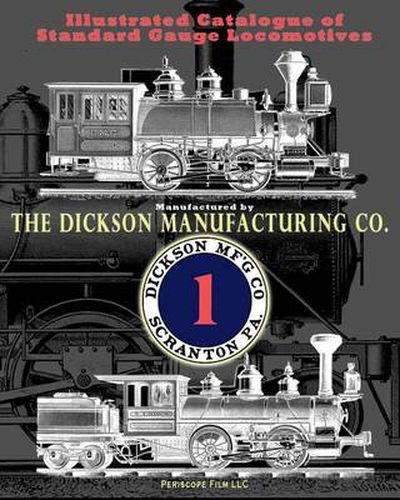Readings Newsletter
Become a Readings Member to make your shopping experience even easier.
Sign in or sign up for free!
You’re not far away from qualifying for FREE standard shipping within Australia
You’ve qualified for FREE standard shipping within Australia
The cart is loading…






This title is printed to order. This book may have been self-published. If so, we cannot guarantee the quality of the content. In the main most books will have gone through the editing process however some may not. We therefore suggest that you be aware of this before ordering this book. If in doubt check either the author or publisher’s details as we are unable to accept any returns unless they are faulty. Please contact us if you have any questions.
Founded in Scranton, Pennsylvania in 1856, the Dickson Manufacturing Company built steam engines, boilers, hoisting and blowing engines and coal-fired steam locomotives for nearly five decades. The locomotives included 10-wheeled engines for the Santa Fe and 8-wheeled passenger engines for the Delaware and Hudson. While most Dickson engines were standard in terms of engineering, the company was a pioneer in the area of compressed-air locomotives for coal mining.By the time Dickson merged with seven other firms to form the American Locomotive Company (ALCO) in 1901, the company had produced 1,334 steam locomotives. The Scranton plant remained operational after the merge, producing 428 light freight, industrial and passenger engines through 1909. In the end however the design of the Dickson shops made it impossible to continue locomotive building. The new, heavy type freight and passenger locomotives simply required more erection space and especially ceiling height in their construction than the Scranton facilities could provide.The former shops for Dickson are still standing, and at least one locomotive serial number 1005, is extant.This book is an exact replica of Dickson’s 1885 illustrated catalog, containing information on the company’s full line of locomotives at the height of its production. It also contains a brief history of the company and a discussion of its resources and financial disposition.
$9.00 standard shipping within Australia
FREE standard shipping within Australia for orders over $100.00
Express & International shipping calculated at checkout
This title is printed to order. This book may have been self-published. If so, we cannot guarantee the quality of the content. In the main most books will have gone through the editing process however some may not. We therefore suggest that you be aware of this before ordering this book. If in doubt check either the author or publisher’s details as we are unable to accept any returns unless they are faulty. Please contact us if you have any questions.
Founded in Scranton, Pennsylvania in 1856, the Dickson Manufacturing Company built steam engines, boilers, hoisting and blowing engines and coal-fired steam locomotives for nearly five decades. The locomotives included 10-wheeled engines for the Santa Fe and 8-wheeled passenger engines for the Delaware and Hudson. While most Dickson engines were standard in terms of engineering, the company was a pioneer in the area of compressed-air locomotives for coal mining.By the time Dickson merged with seven other firms to form the American Locomotive Company (ALCO) in 1901, the company had produced 1,334 steam locomotives. The Scranton plant remained operational after the merge, producing 428 light freight, industrial and passenger engines through 1909. In the end however the design of the Dickson shops made it impossible to continue locomotive building. The new, heavy type freight and passenger locomotives simply required more erection space and especially ceiling height in their construction than the Scranton facilities could provide.The former shops for Dickson are still standing, and at least one locomotive serial number 1005, is extant.This book is an exact replica of Dickson’s 1885 illustrated catalog, containing information on the company’s full line of locomotives at the height of its production. It also contains a brief history of the company and a discussion of its resources and financial disposition.